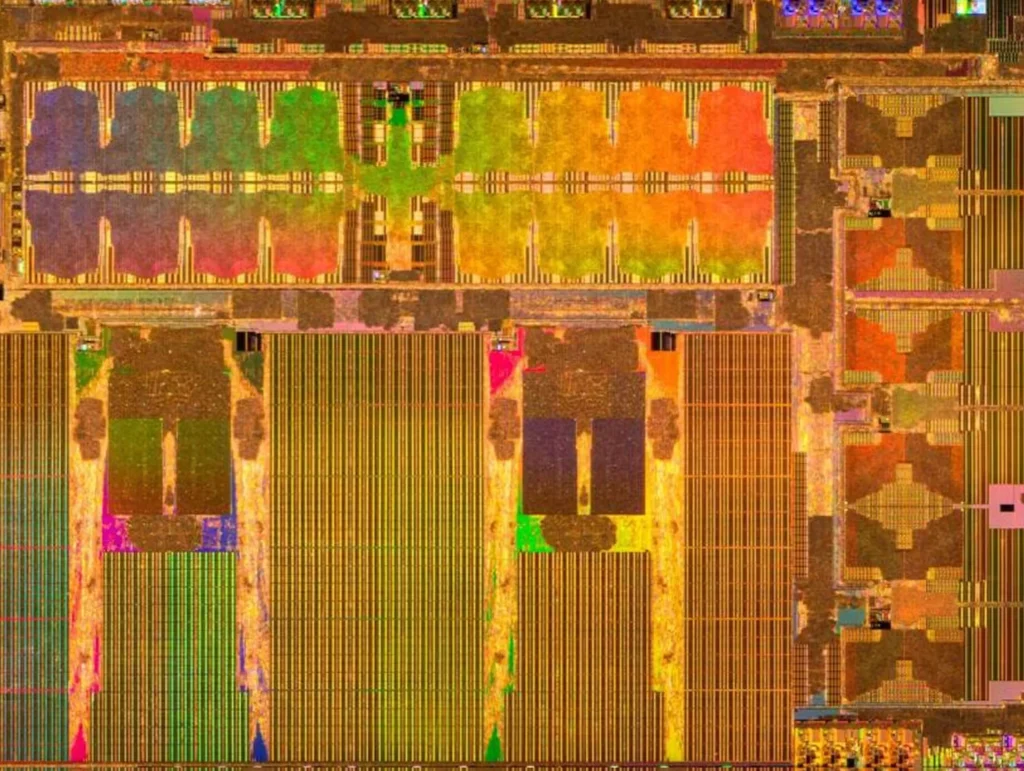Tesla has revealed its new AI5 chip, which is said to be up to 40 times faster than the previous AI4 hardware during its third-quarter 2025 earnings call on October 22,. The chip will run Tesla’s Full Self-Driving systems, robots, and data centers. Elon Musk confirmed that production will start in 2026 with both Samsung and TSMC handling manufacturing in their U.S. plants.
The AI5 chip is a major step up. It can deliver between 2000 and 2500 TOPS (trillion operations per second), giving roughly five times the raw computing strength of AI4.

Musk said he worked closely with Tesla’s engineers on weekends to improve the chip’s architecture. The new chip uses a simpler design approach, removing parts that weren’t needed, like the image signal processor and GPU. This change makes it smaller and more efficient. Musk added that since Tesla only designs chips for itself, it can focus completely on what its systems need.
The chip’s structure includes tensor and vector cores that handle large neural networks and decision-making tasks quickly. It also features hybrid-precision computing, allowing it to switch between different numerical formats for speed and accuracy. Tesla added local SRAM and LPDDR5X memory to reduce delay during data transfer inside the chip.
Uses beyond cars
The AI5 chip will be used in many parts of Tesla’s operations. It will serve as the central compute unit for the next-generation FSD computer, giving vehicles near-human decision-making ability while driving. The same chip will also run the Optimus humanoid robot, helping it see, move, and react faster.
When Tesla has spare chips, they will go to its data centers. Musk said these extra chips could increase Tesla’s computing network, which already matches the strength of over 81,000 Nvidia H100 GPUs. Even so, he said Tesla will keep using Nvidia parts for AI training tasks, as the two technologies work well together.
Built by Samsung and TSMC in the U.S.
Both Samsung’s Texas and TSMC’s Arizona facilities will build the AI5 chip. Musk noted that Samsung’s plant has slightly newer tools, but both foundries will make high-end versions of the chip. This dual-source plan will help Tesla avoid production shortages as AI5 moves into large-scale manufacturing.
Tesla expects the chip’s power use to range between 700 and 800 watts, depending on driving complexity. That’s a big increase from earlier chips but needed for handling more advanced tasks like real-time reasoning, obstacle detection, and route planning.
Musk called the AI5 Tesla’s answer to general-purpose AI chips made by Nvidia. He said that traditional chips handle “almost impossibly difficult requirements,” while Tesla’s design cuts out extra parts for simpler, faster inference. This lets the chip run model predictions almost ten times cheaper than Nvidia’s comparable hardware.
The new chip is half the size of Nvidia and AMD’s high-end units yet may cost 10 times less per inference run, according to early estimates. Tesla plans to use this competitive edge in its Robotaxi and Cybercab vehicles starting in 2026.
The AI5 marks Tesla’s move toward complete control of its AI stack from software to silicon. After pausing its Dojo training chip program, Tesla shifted focus to inference-first processors like AI5 and AI6. These designs are meant for high-volume production and real-time decision tasks in cars and robots.
Musk said the follow-up AI6 chip, already under design, will use a smaller 3 nm process through Samsung and offer two to three times more performance than AI5. This next phase will start around 2028.
The AI5 chip will debut in Tesla’s autonomous Cybercab service, targeted for 2026. Musk said the chip’s speed and efficiency will let the cars make driving choices faster than humans. He also hinted that older Tesla vehicles running Hardware 3 will get a light version of FSD 14 in 2026, though without full AI5 functionality.
Many companies are moving away from one-size-fits-all chips toward task-specific designs built for speed and cost efficiency. The AI5 is Tesla’s largest move yet in that direction.
You may also like to read:
- Real-time reasoning coming to Tesla FSD 14.3 and 14.4 »
- Elon Musk says grok 5 has a 10% chance of achieving AGI »
- Tesla (TSLA) Q3 2025 earnings call breakdown: Key insights »





Note that the image is NOT for AI5, but is that for AI3/HW3 shown in 2019 Autonomy Day.
Thanks for catching that and for citing us! The image was originally shared by well-known Tesla influencer @SawyerMerritt on X. We’ve now updated the post and corrected the error.